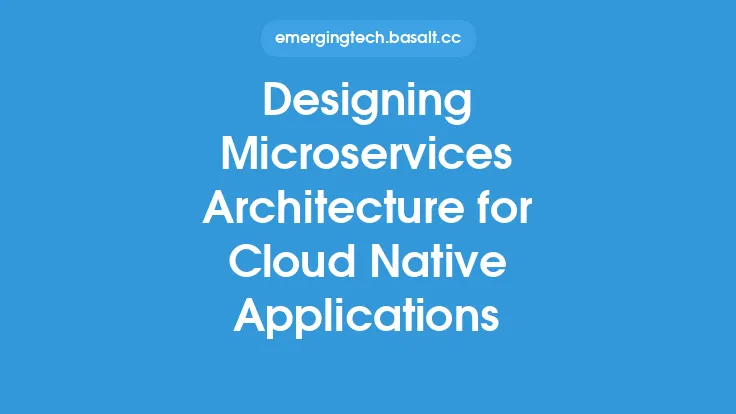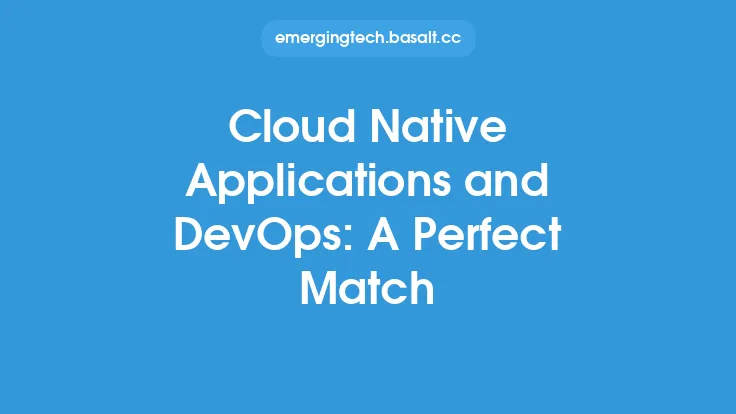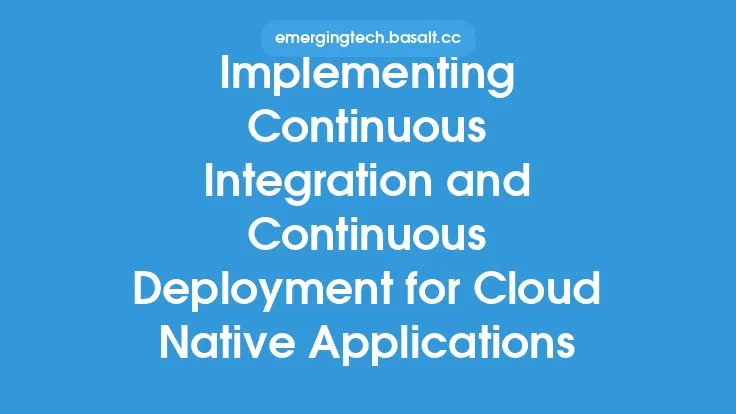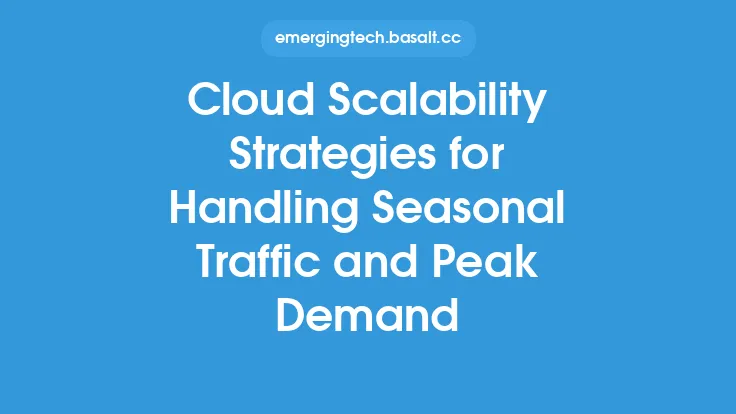Serverless architecture has become a popular choice for cloud native applications due to its ability to provide scalability, flexibility, and cost-effectiveness. In a serverless architecture, the cloud provider manages the infrastructure, and the application owner only pays for the resources used. This approach allows developers to focus on writing code without worrying about the underlying infrastructure. In this article, we will explore the different serverless architecture patterns for cloud native applications, their benefits, and use cases.
Introduction to Serverless Architecture
Serverless architecture is a cloud computing model in which the cloud provider manages the infrastructure, and the application owner only pays for the resources used. This approach is also known as function-as-a-service (FaaS) or event-driven computing. In a serverless architecture, the application code is executed on a cloud provider's servers, but the application owner does not have to provision or manage the servers. The cloud provider is responsible for scaling the application, handling security, and providing high availability.
Benefits of Serverless Architecture
Serverless architecture provides several benefits, including:
- Scalability: Serverless architecture can scale automatically to handle changes in workload, without the need for manual intervention.
- Cost-effectiveness: With serverless architecture, the application owner only pays for the resources used, which can lead to significant cost savings.
- Flexibility: Serverless architecture allows developers to write code in any language, without worrying about the underlying infrastructure.
- Faster time-to-market: Serverless architecture enables developers to deploy applications quickly, without the need for provisioning and configuring infrastructure.
Serverless Architecture Patterns
There are several serverless architecture patterns that can be used for cloud native applications, including:
- Event-driven architecture: In this pattern, the application is triggered by events, such as changes to a database or the arrival of a new message in a queue.
- Request-response architecture: In this pattern, the application handles requests from clients, such as web browsers or mobile apps.
- Stream processing architecture: In this pattern, the application processes streams of data, such as log files or sensor data.
- Batch processing architecture: In this pattern, the application processes large batches of data, such as data imports or report generation.
Event-Driven Architecture
Event-driven architecture is a popular serverless architecture pattern, in which the application is triggered by events. This pattern is well-suited for applications that need to respond to changes in the environment, such as changes to a database or the arrival of a new message in a queue. Event-driven architecture typically involves the use of an event bus, which is responsible for routing events to the appropriate application components.
Request-Response Architecture
Request-response architecture is another popular serverless architecture pattern, in which the application handles requests from clients. This pattern is well-suited for applications that need to handle user requests, such as web applications or mobile apps. Request-response architecture typically involves the use of an API gateway, which is responsible for routing requests to the appropriate application components.
Stream Processing Architecture
Stream processing architecture is a serverless architecture pattern, in which the application processes streams of data. This pattern is well-suited for applications that need to process large amounts of data in real-time, such as log files or sensor data. Stream processing architecture typically involves the use of a stream processing engine, which is responsible for processing the data streams.
Batch Processing Architecture
Batch processing architecture is a serverless architecture pattern, in which the application processes large batches of data. This pattern is well-suited for applications that need to process large amounts of data, such as data imports or report generation. Batch processing architecture typically involves the use of a batch processing engine, which is responsible for processing the data batches.
Best Practices for Serverless Architecture
To get the most out of serverless architecture, it's essential to follow best practices, including:
- Keep functions small and focused: Serverless functions should be small and focused on a specific task, to ensure that they can be executed quickly and efficiently.
- Use the right programming language: The choice of programming language will depend on the specific requirements of the application, but popular choices for serverless applications include Node.js, Python, and Java.
- Optimize for performance: Serverless applications should be optimized for performance, to ensure that they can handle changes in workload without impacting user experience.
- Monitor and log: Serverless applications should be monitored and logged, to ensure that any issues can be quickly identified and resolved.
Conclusion
Serverless architecture is a powerful approach to building cloud native applications, providing scalability, flexibility, and cost-effectiveness. By understanding the different serverless architecture patterns, including event-driven, request-response, stream processing, and batch processing, developers can choose the best approach for their application. By following best practices, such as keeping functions small and focused, using the right programming language, optimizing for performance, and monitoring and logging, developers can ensure that their serverless applications are reliable, efficient, and meet the needs of their users.





